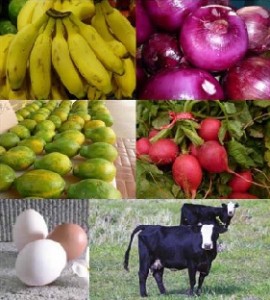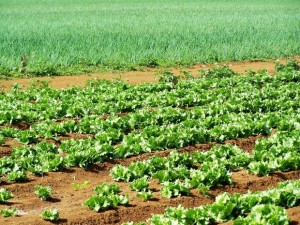State Releases Food Security Strategies Report
By Sonia Isotov
Hawaii’s Office of Planning has released a series of three reports on “Increased Food Security and Food Self-Sufficiency Strategy” for the state.
“This self-sufficiency strategy is a living document which provides a first step for continued dialog and the initiation of actions to increase food self-sufficiency and food security in Hawai`i,” said Jesse Souki, the director of the Office of Planning in a written statement.
“Valuable input and feedback in the development of the strategy was provided by a broad group of stakeholders and key government agencies.”
Developed in cooperation with the Department of Agriculture, the strategy is focused on programs that can guide and support increasing food self-sufficiency in Hawai`i by:
- Increasing the demand for and access to locally grown foods;
- Increasing the production of locally grown foods; and
- Providing policy and organizational support to meet food self-sufficiency needs.
“The strategy calls for actions and investments to increase food self-sufficiency and help Hawaii’s farmers, ranchers and economy,” said Russell Kokubun, the chairperson of the Hawai`i Board of Agriculture. “Consistent with the governor’s New Day plan, this plan seeks to increase Hawaii’s food self-sufficiency.”
Kokubun noted that Hawai`i has become less food self-sufficient over the past 30 years. It has been estimated that 85-90% of Hawaii’s food is now imported. Hawaii’s location approximately 2,506 miles from the continental United States makes it particularly vulnerable to shipping disruptions caused by natural disasters and global events.
The Office of Planning’s strategy states that producing and consuming more locally grown foods will create jobs and keep money circulating in Hawaii’s economy. Increasing food self-sufficiency will also promote good nutrition and will decrease the risk of introducing harmful invasive pests.
The strategy is a three volume report. Three reports were prepared with the assistance of grant funding from the Economic Development Administration (EDA).
The Increased Food Security and Food Self-Sufficiency Strategy (Strategy) sets forth objectives, policies and actions to increase the amount of locally grown food consumed by Hawaii residents. The strategy is a living document intended as a first step toward continued dialog and implementation.
Volume II is entitled A History of Agriculture in Hawaii and Technical Reference Document. It examines the history of agriculture in Hawaii from the 1960s to the present, with a focus on the transition from plantation agriculture to diversified agriculture. Volume II also contains background information and serves as a resource base for the strategy.
Volume III is entitled Assessment of Irrigation Systems in Hawaii. It provides an assessment of the general status and needs of agricultural irrigation systems owned by the State of Hawaii. It provides estimated costs for rehabilitation and maintenance of these systems.
Volume III also includes a summary of the economic impact of several inventoried agricultural irrigation systems.
The entire series is available at: http://hawaii.gov/dbedt/op/special_plans.htm












